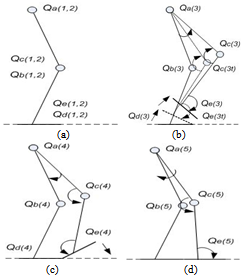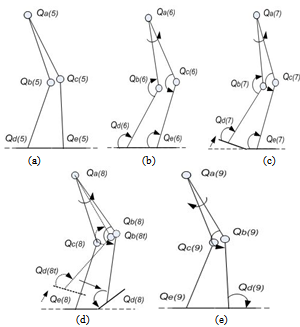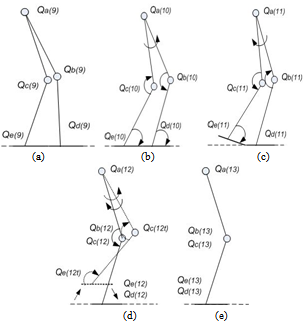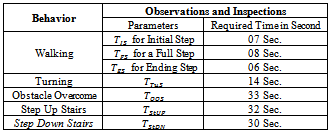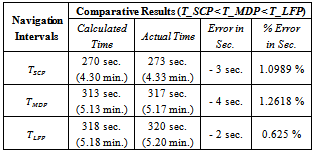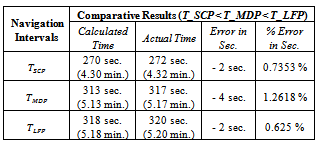| [1] | M. Akhratuzzaman and A. A. Shafie. Advancement of Android and Contribution of Various Countries in the Research and Development of the Humanoid Platform. International Journal of Robotics and Automation (IJRA), Volume (1): Issue (2), 2010.Computer Science Journal (CSC Journal), Malaysia. 43-57 |
| [2] | M. Akhtaruzzaman and A. A. Shafie. Geometrical Analysis on BIOLOID Humanoid System Standing on Single Leg. Proceedings of 2011 4th International Conference on Mechatronics (ICOM `11), 17-19 May 2011, Kuala Lumpur, Malaysia |
| [3] | H. Qiang, K. Shuuji, K. Noriho, K. Kenji, Y. Kazuhito, A. Hirohiko, K. Kiyoshi, and T. Kazuo. A High Stability, Smooth Walking Pattern for a Biped. Robot. Proceedings of the 1999 IEEE International Conference on Robotics and Automation, Detroit, Michigan May 1999. 65–71 |
| [4] | T. Sugihara and H. Kobayashi. A Handy Humanoid Robot Navigation by Non-interruptive Switching of Guided Point and Synergetic Points. Proceedings of the 8th IEEE-RAS International Conference on Humanoid Robots, December 1 - 3, 2008, Daejeon, Korea |
| [5] | C. Chevallereau, G. Bessonnet, G. Adda and Y. Aoustin. Bipedal Robots Modeling, Design and walking Synthesis. ISTE Ltd. and John Wiley & Sons 2009 |
| [6] | M. Akhtaruzzaman, S. K. K. Hasan and A. A. Shafie. Design and Development of an Intelligent Autonomous Mobile Robot for a Soccer Game Competition. Proceedings of the 2009 International Conference on Mechanical and Electronics Engineering (ICMEE), June 27-29, 2009. Chennai, India. 167-171 |
| [7] | S. Thrun, W. Burgard and D. Fox. A Probabilistic Approach to Concurrent Mapping and Localization for Mobile Robots. Autonomous Robots. Volume 5, Numbers 3-4, Kluwer Academic Publishers. Manufactured in The Netherlands. 253-271 |
| [8] | G. J. Steffen, F. Masaki and F. Masahiro. A Modular Architecture for Humanoid Robot Navigation. Proceedings of 2005 5th IEEE-RAS International Conference on Humanoid Robots, 5th Dec. 2005. 26-31 |
| [9] | S. C. Long. Ascending and Descending Stairs for a Biped Robot. IEEE Transactions On Systems, Man and Cybernetics, Part A: Systems And Humans, Vol. 29, No. 3, May 1999. 255-268 |
| [10] | M. Stilman, K. Nishiwaki, S. Kagami and J. J. Kuffner. Planning and Executing Navigation Among Movable Obstacles. Proceedings of the 2006 IEEE/RSJ International Conference on Intelligent Robots and Systems, October 9 - 15, 2006, Beijing, China. 820-826 |
| [11] | R. Tse, A. Tay and W. Hutama. Robot Navigation using KFLANN Place Field. Proceedings of the 2008 IEEE International Conference on Systems, Man and Cybernetics (SMC 2008), 12-15 Oct. 2008, Singapore. 3034 – 3039 |
| [12] | Y. Guan, K. Yokoi, N. E. San and K. Tanie. Feasibility of Humanoid Robots Stepping over Obstacles. Proceedings of 2004 IEEWRSJ International Conference on intelligent Robots and Systems. September 28 -October 2,2004, Sendal, Japan. 130-135 |
| [13] | Y. Guan, N. E. Sian and K. Yokoi. Motion Planning for Humanoid Robots Stepping over Obstacles. IEEE/RSJ International Conference on Intelligent Robots and Systems, (IROS 2005). 2005. 363-369 |
| [14] | G. Capi, Y. Nasu, L. Barolli and K. Mitobe. Real time gait generation for autonomous humanoid robots: A case study for walking. Robotics and Autonomous Systems 42 (2003), Elsevier Science B.V. 107-116 |
| [15] | J. Chestnutt, M. Lau, G. Cheung, J. Kuffner, J. Hodgins and T. Kanade. Footstep Planning for the Honda ASIMO Humanoid. Proceedings of the 2005 IEEE International Conference on Robotics and Automation, Barcelona, Spain, April 2005. 629-634 |
| [16] | D. Katic and M. Vukobratovic. Survey of Intelligent Control Techniques for Humanoid Robots. Journal of Intelligent and Robotic Systems 37: 2003. Kluwer Academic Publishers. Printed in the Netherlands. 117–141 |
| [17] | I. W. Park, J. Y. Kim, J. Lee and J. H. Oh. Development of Humanoid Robot Platform KHR-2 (KAIST Humanoid Robot - 2). IEEE/RAS International Conference on Humanoid Robots, 2004. Vol. 1, 292-310 |
| [18] | I. W. Park, J. Y. Kim, J. Lee and J. H. Oh. Mechanical Design of Humanoid Robot Platform KHR-3(KAIST Humanoid Robot-3: HUBO). Proceedings of 2005 5th IEEE/RAS International Conference on Humanoid Robots. 321-326 |
| [19] | K. Kaneko, F. Kanehiro, S. Kajita, K. Yokoyama, K. Akachi, T. Kawasaki, S. Ota and T. Isozumi. Design of Prototype Humanoid Robotics Platform for HRP. Proceedings of the 2002 IEEE/RSJ Intl. Conference on Intelligent Robots and Systems EPFL, Lausanne, Switzerland. October 2002. 2431-2436 |
| [20] | K. Kaneko, K. Miura, F. Kanehiro, M. Morisawa, S. Nakaoka and S. Kajita. Cybernetic Human HRP-4C. Proceedings of 9th IEEE-RAS International Conference on Humanoid Robots, December 7-10, 2009 Paris, France. 7-14 |
| [21] | D. Mewes and A. Heloir. The Uncanny Valley. Seminar report, DFKI and Saarland University, 2008. Retrieved on June 25, 2011.http://embots.dfki.de/doc/seminar_ss09/writeup%20uncanny%20valley.pdf |
| [22] | J. Carpenter, J. M. Davis, N. E. Stewart, T. R. Lee, J. D. Bransford and N. Vye. Gender Representation and Humanoid Robots Designed for Domestic Use. International Journal of Social Robots, March 19, 2009. Springer Science & Business Media. 261-265 |
| [23] | M. Akhtaruzzaman and A. A. Shafie. Evolution of Humanoid Robots and Contribution of Various Countries in Advancing the Research and Development of the Platform. The International Conference on Control, Automation and Systems (ICCAS), Oct. 27-30, 2010 in KINTEX, Gyeonggi-do, Korea. 1021–1028 |
| [24] | M Eaton. Further Explorations in Evolutionary Humanoid Robotics. Proceedings of 12th International Symposium on Artificial Life and Robotics (ISAROB), Oita, Japan, January 25 – 27, 2007. 133-137 |
| [25] | F. A. Siddiky, N. H. Siddique, M. O. Tokhi. A New Approach to Design and Control of Biped Robot with Minimal Number of Actuators. Proceedings of International Conference on Climbing and Walking Robots and Support Technologies for Mobile Machines 2009, 09th September 2009. 115–122 |
| [26] | A. Konno, K. Nagashima, R. Furukawa, K. Nishiwaki, T. Noda, M. Inaba and H. Inoue. Development of a Humanoid Robot Saika. Proceedings of IROS, 1997 IEEE. 805-810 |
| [27] | D. Wollherr, M. Hardt, M. Buss and O. V. Stryk. Actuator Selection and Hardware Realizationof a Small and Fast-Moving, Autonomous Humanoid Robot. Proceedings of the 2002 IEEE/RSJ International Conference on Intelligent Robots and Systems, Lausanne, Switzerland, September 30 - October 4, 2002. 2491-2496 |
| [28] | E. Choong, C. M. Chew, A. N. Poo and G. S. Hong. Mechanical Design of an Anthropomorphic Bipedal Robot. First Humanoid, Nanotechnology, Information Technology, Communication and Control Environment and Management (HNICEM) International Conference, March 27-30, 2003, Manila, Philippines |
| [29] | R. Beira, M. Lopes, M. Praca, J. S. Victor, A. Bernardino, G. Mettay, F. Becchiz and R. Saltaren. Design of the Robot-Cub (iCub) Head. Proceedings of IEEE International Conference on Robotics and Automation, Orlando, May 2006 |
| [30] | D. Gouaillier, V. Hugel and P. Blazevic. Mechatronic design of NAO humanoid. Proceedings of 2009 IEEE International Conference on Robotics and Automation Kobe International Conference Center Kobe, Japan, May 12-17, 2009. 769-774 |
| [31] | V. V. Madadi and S. Tosunoglu. Design and Development of a Biped Robot. Proceedings of the 2007 IEEE International Symposium on Computational Intelligence in Robotics and Automation. Jacksonville, FL, USA, June 20-23, 2007. 243-247 |
| [32] | Y. Matsusaka. History and Current Researches on Building a Human Interface for Humanoid Robots. Wachsmuth and G. Knoblich (Eds.): Modeling Communication, LNAI 4930, 2008. Springer-Verlag Berlin Heidelberg 2008. 109–124 |
| [33] | N. T. Phuong, D. W. Kim, H. K. Kim and S. B. Kim. An Optimal Control Method for Biped Robot with Stable Walking Gait. Proceedings of the 8th IEEE-RAS International Conference on Humanoid Robots, December 1-3, 2008, Daejeon, Korea. 211-218 |
| [34] | R. Simmons and S. Koenig. Probabilistic Robot Navigation in Partially Observable Environments. Proceedings of the International Joint Conference on Artificial Intelligence (IJCAI '95), July, 1995, 1080-1087 |
| [35] | M. Abdallah and A. Goswami. A Biomechanically Motivated Two-Phase Strategy for Biped Upright Balance Control. Proceedings of the 2005 IEEE International Conference on Robotics and Automation Barcelona, Spain, April 2005. 2008 – 2013 |
| [36] | A. Goswami. Kinematic and dynamic analogies between planar biped robots and the reaction mass pendulum (RMP) model. 8th IEEE-RAS International Conference on Humanoid Robots. 1-3 Dec. 2008, Daejeon, Korea. 182 – 188 |
| [37] | C. Zhou, P. K. Yue, J. Ni1 and S. B. Chan. Dynamically Stable Gait Planning for a Humanoid Robot to Climb Sloping Surface. Proceedings of the 2004 IEEE Conference on Robotics, Automation and Mechatronics Singapore, 1-3 December, 2004. 341-346 |
| [38] | P. Gibbons, M. Mason, A. Vicente, G. Bugmann and P. Culverhouse. Optimization of Dynamic Gait for Bipedal Robots. Proceedings of the 2009 IEEE-RAS Intl. Conf. On Humanoid Robots (Humanoids 2009), Paris(France), 2009, December 7-10 |
| [39] | T. Takenaka. The control system for the Honda Humanoid Robot. Published by Oxford University Press on behalf of the British Geriatrics Society. Age and Ageing 2006, 35-S2: ii24-ii26 |
| [40] | H. O. Lim and A. Takanishi. Biped walking robots created at Waseda University: WL and WABIAN family, Phil. Trans. R. Soc. A (2007) 365, 49–64. Published online on 17th November 2006. Retrieved on March 25, 2011. http://rsta.royalsocietypublishing.org/content/365/1850/49.full |
| [41] | C. Schafer and R. Dillmann. Kinematic Design of a Humanoid Robot Wrist. Journal of Robotic System, 18(12). John Wiley and Sons, Inc. 747-754 |
| [42] | M. Akhtaruzzaman, A. A. Shafie and M. Rashid. Component Selection Strategy for an Anthropomorphic Robot. National Postgraduate Conference (NPC) 2011, Malaysia. 19-20 September 2011 |
| [43] | M. Akhtaruzzaman and A. A. Shafie. An Attempt to Develop a Biped Intelligent Machine BIM-UIA. Proceedings of 2011 4th International Conference on Mechatronics (ICOM `11), 17-19 May 2011, Kuala Lumpur, Malaysia |
| [44] | M. Akhtaruzzaman and A. A. Shafie. A Novel Gait for Toddler Biped and its Control Using PIC 16F877A. Proceedings of 2011 4th International Conference on Mechatronics (ICOM `11), 17-19 May 2011, Kuala Lumpur, Malaysia |
| [45] | M. Akhtaruzzaman, N. A. B. M. Razali, M. M. Rashid, A. A. Shafie. An Experiment on Electric Power Steering (EPS) System of a Car. Proceedings of IACSIT 2010 International Conference on Mechanical and Aerospace Engineering (ICMAE). Nov. 26 – 28, 2010. Kuala Lumpur, Malaysia. 148 – 153 |
| [46] | M. Akhtaruzzaman, N. B. Samsuddin, N. B. Umar and M. Rahman. Design and Development of a Wall Climbing Robot and its Control System. Proceedings of 12th International Conference on Computer and Information Technology (ICCIT), December 21 – 23, 2009. Independent University, Bangladesh. 309 – 313 |
| [47] | M. Akhtaruzzaman, R. Akmeliawati and T. W. Yee. Modeling and Control of a Multi degree of Freedom Flexible Joint Manipulator. Proceedings of the Second International Conference on Computer and Electrical Engineering (ICCEE), December 28 – 30, 2009. Dubai, UAE. 249 – 254 |
| [48] | M. Akhtaruzzaman. Digital Bangla Clock Interfacing with Computer using Wireless media. Proceedings of the International Conference on Computer and Information Technology (ICCIT), 2005. Dhaka, Bangladesh. 401 – 405 |
| [49] | M. A. Akhter. Accumulation of Research. LAP Lambert Academic Publishing, 2011 |
| [50] | S. B. Niku. Introduction to Robotics Analysis, Systems, Applications. 2001 Prentice Hall, Inc. Upper Saddle River, New Jersey 07458. 29-85 |
| [51] | L. Lee and W. E. L. Grimson. Gait Analysis for Recognition and Classification. Proceedings of the Fifth IEEE International Conference on Automatic Face and Gesture Recognition (FGR), 2002. 1-8 |
| [52] | K. G. Kim, J. Y. Lee, D. Choi, J. M. Park and B. J. You. Autonomous Task Execution of a Humanoid Robot using a Cognitive Model. Proceedings of the 2010 IEEE International Conference on Robotics and Biomimetics. December 14-18, 2010, Tianjin, China. 405-410 |
| [53] | S. Candido, Y.T. Kim and S. Hutchinson. An Improved Hierarchical Motion Planner for Humanoid Robots. Proc. IEEE-RAS Int’l. Conf. on Humanoid Robots, Daejeon, Korea, 2008, 654-661 |
| [54] | S. Candido, Y.T. Kim and S. Hutchinson. A Workspace Decomposition for Hierarchical Motion Planning with Humanoid Robots. Proc. Int’l. Conf. on Advanced Robotics, Jeju island, South Korea, 2007 |
| [55] | Y. H. Mu. Task-Oriented Architecture for a Humanoid Robot. Applied Mechanics and Materials, Vol. 40-41, Trans Tech Publications, Switzerland, 2011. 228-234 |
| [56] | S. H. Piao, X. F. Wang, W. Zhao, Q. B. Zhong. Research of Robot Gait Based on Evolution Algorithms. Journal of Applied Mechanics and Materials, Vol. 48-49, Trans Tech Publications, Switzerland, 2011. 928-931 |
| [57] | M. Akhtaruzzaman, N. A. B. M. Razali, M.. M. Rashid, A. A. Shafie. An Experiment on Electric Power Steering (EPS) System of a Car. Journal of Applied Mechanics and Materials Vols. 110-116, Trans Tech Publications, Switzerland, 2012. 4941-4950 |
| [58] | X. F. Wang, B. R. Hong, Q. B. Zhong, S. H. Piao. A New Robot Stance Control Method. Journal of Advanced Materials Research, Vols. 255-260, Trans Tech Publications, Switzerland, 2011. 2101-2105 |
| [59] | Q. J. Du, L. P. Li, B. Dai. Object Manipulation Control Strategy Analysis Center of Humanoid Robot. Journal of Advanced Materials Research, Vols. 267, Trans Tech Publications, Switzerland, 2011. 904-908 |
| [60] | Q. J. Du, C. Sun, X. G. Huang. Motion Control System Design of a Humanoid Robot Based on Stereo Vision. Journal of Applied Mechanics and Materials, Vols. 55-57, Trans Tech Publications, Switzerland, 2011. 877-880 |
| [61] | T. J. Zhao. Study Situation and Key Technology of Mobile Humanoid Robot. Journal of Advanced Materials Research Vols. 295-297, Trans Tech Publications, Switzerland, 2011. 450-453 |
| [62] | T. J. Zhao. Dynamic Cooperative Manipulating Pattern Generation for Mobile Humanoid Robot Using Waist Moment Compensation. Journal of Advanced Materials Research Vols. 201-203, Trans Tech Publications, Switzerland, 2011. 1978-1982 |
| [63] | Q. J. Du, X. Y. Zhang, X. G. Huang. Modeling and Analysis of a Humanoid Robot Active Stereo Vision Platform. Journal of Applied Mechanics and Materials, Vols. 55-57, Trans Tech Publications, Switzerland, 2011. 868-871 |
| [64] | T. Li, B. Hu. Research and Application of Intelligent Humanoid Robot. Journal of Applied Mechanics and Materials, Vols. 44-47, Trans Tech Publications, Switzerland, 2011. 456-460 |
| [65] | G. C. Yu, Z. L. Wang, L. Xie, J. M. Xu. Network-Based Humanoid Robot Remote Interaction with the Actual Situation Fusion Technology. Journal of Advanced Materials Research Vols. 271-273, Trans Tech Publications, Switzerland, 2011. 191-196 |
| [66] | T. Y. Wu, T. J. Yeh, B. H. Hsu. Trajectory Planning of a One-Legged Robot Performing a Stable Hop. The International Journal of Robotics Research (IJRR), 19 Jan. 2011. 01-20 |
| [67] | J. W. Hurst. The Electric Cable Differential Leg: A Novel Design Approach for Walking and Running. International Journal of Humanoid Robotics (IJHR), Vol. 8, Issue: 2 (2011) , 301-321 |
| [68] | J. Liu, F. Xue and X. Chen. A Universal Biped Walking Generator for Complex Environments with Pattern Feasibility Checking. International Journal of Humanoid Robotics (IJHR), Vol. 8, Issue: 2 (2011), 323-357 |
| [69] | M. Tarokh and M. Wang. A Computational Intelligent Approach to Kinematics Problems in Robotics and Computer Animation. International Journal of Humanoid Robotics (IJHR), Vol. 8, Issue: 2 (2011), 375-390 |
| [70] | F. A. Siddiky, M. S. Alam and T. Ahsan. High Performance Reliable Obstacle Detection and Height Measurement by Stereo Camera for Intelligent Home Service Robot. 10th International Conference on Computer and Information Technology (ICCIT), 27-29 Dec. 2007, Dhaka, Bangladesh. 01-06 |
| [71] | R. Challoo, P. Rao, S. Ozcelik, L. Challoo, and S. Li. Navigation Control and Path Mapping of a Mobile Robot using Artificial Immune Systems. International Journal of Robotics and Automation, Vol. (1), Issue (1), 2010. 01-25 |
| [72] | A. Iqbal, A. A Shafie, M. R. Khan, M. F. Alias and J. Radhi. HRI for Interactive Humanoid Head Amir-II for Visual Tracking and Servoing of Human Face. International Journal of Robotics and Automation (IJRA), Vol. (2), Issue (3), 2011. 220-231 |
| [73] | S. Mondal, A. Nandy, Chandrapal, P. Chakraborty and G. C. Nandi. A Central Pattern Generator based Nonlinear Controller to Simulate Biped Locomotion with a Stable Human Gait Oscillation. International Journal of Robotics and Automation (IJRA), Vol. (2), Issue (2), 2011. 93-106 |
| [74] | S. Garrido, L. Moreno, D. Blanco and P. Jurewicz. Path Planning for Mobile Robot Navigation using Voronoi Diagram and Fast Marching. International Journal of Robotics and Automation (IJRA), Vol. (2), Issue (1), 2011. 42-64 |
| [75] | Y. Liu. A Robotic Prototype System for Child Monitoring. International Journal of Robotics and Automation (IJRA), Vol. (2), Issue (1), 2011. 65-77 |



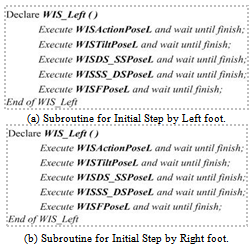
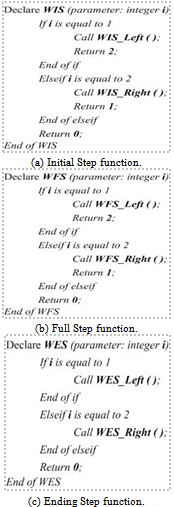
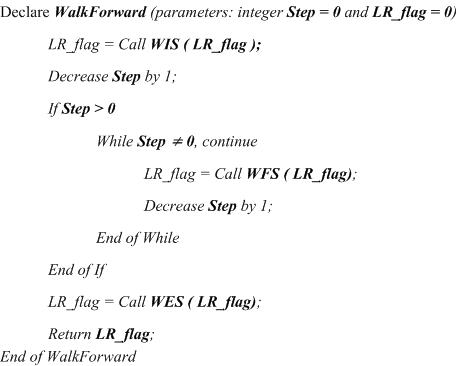
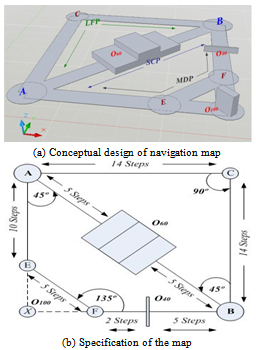

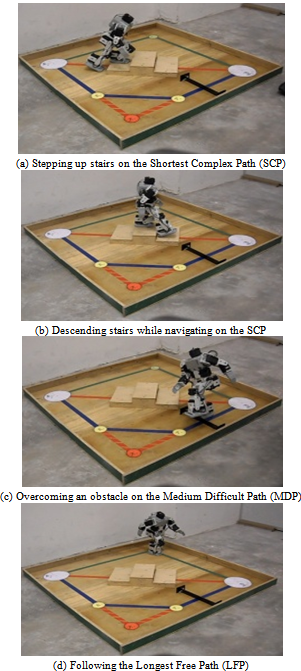
 Abstract
Abstract Reference
Reference Full-Text PDF
Full-Text PDF Full-Text HTML
Full-Text HTML